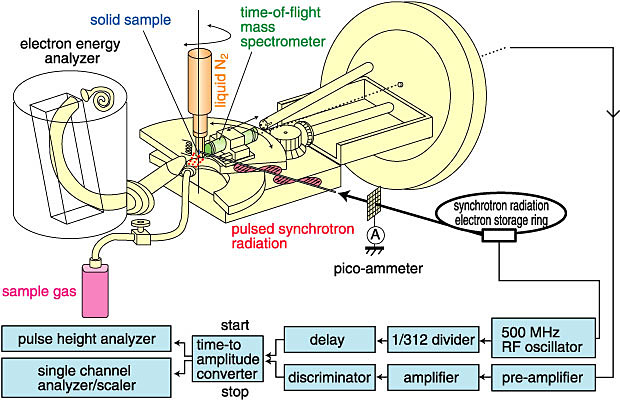
|
Fig. 4-15(b)
|
A schematic view of the experimental setup and signal-flow diagram You can select the direction of excitation by rotating the sample-substrate axis to an angle which is called "polarization angle" and is defined as the difference from the E vector of synchrotron radiation. Reaction products coming off solid surfaces can be detected using a time-of-flight mass spectrometer which can rotate in the ultra-high-vacuum chamber kept at 10-10 Torr. |
| Go back by your web browser, or click the right button. |  |
| Persistent Quest - Research Activities 2000 Copyright(c) Japan Atomic Energy Research Institute |